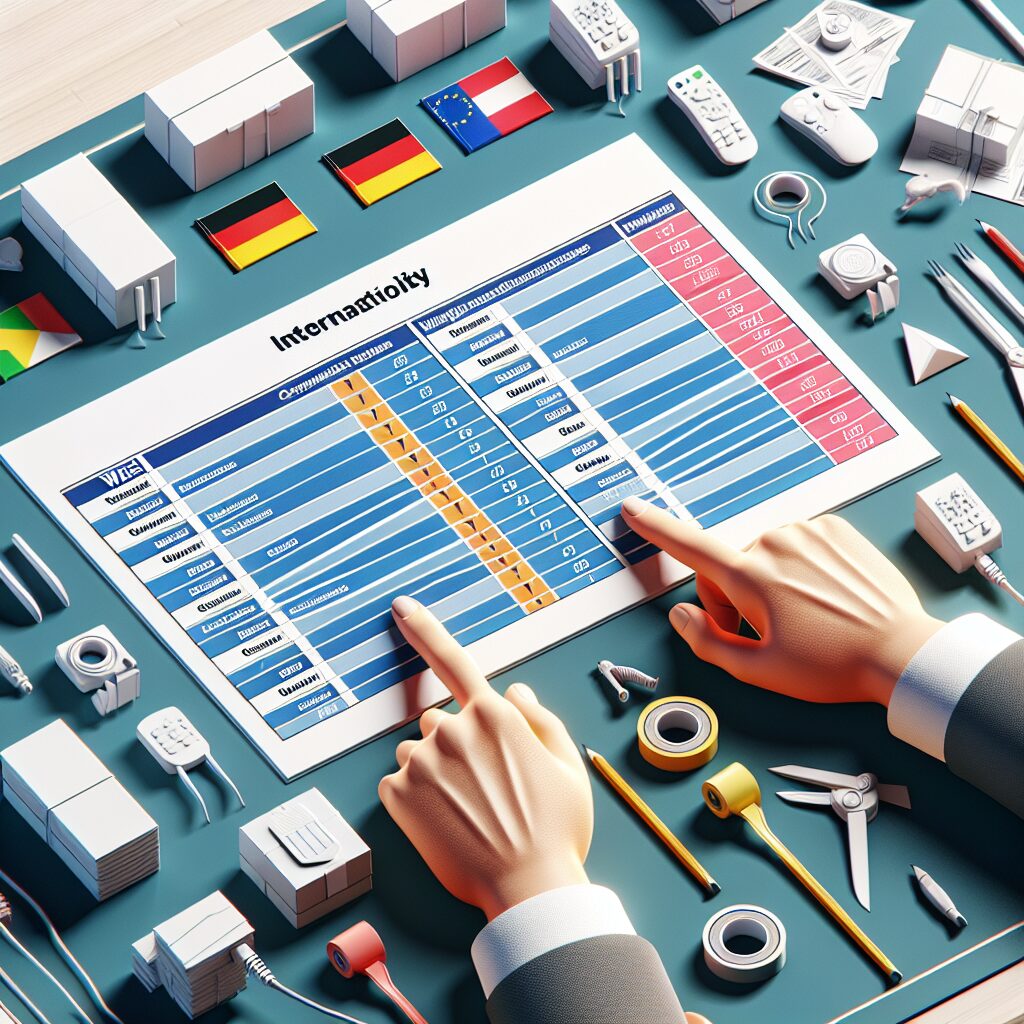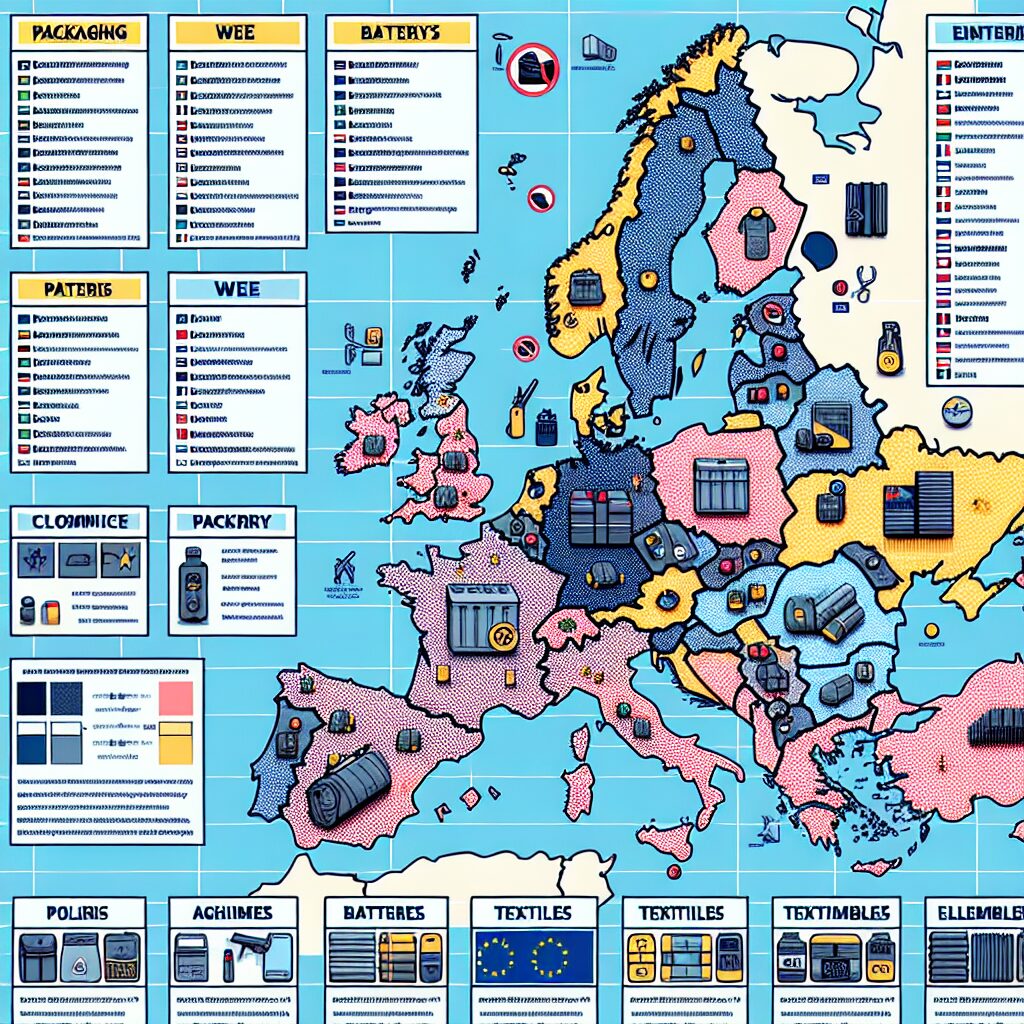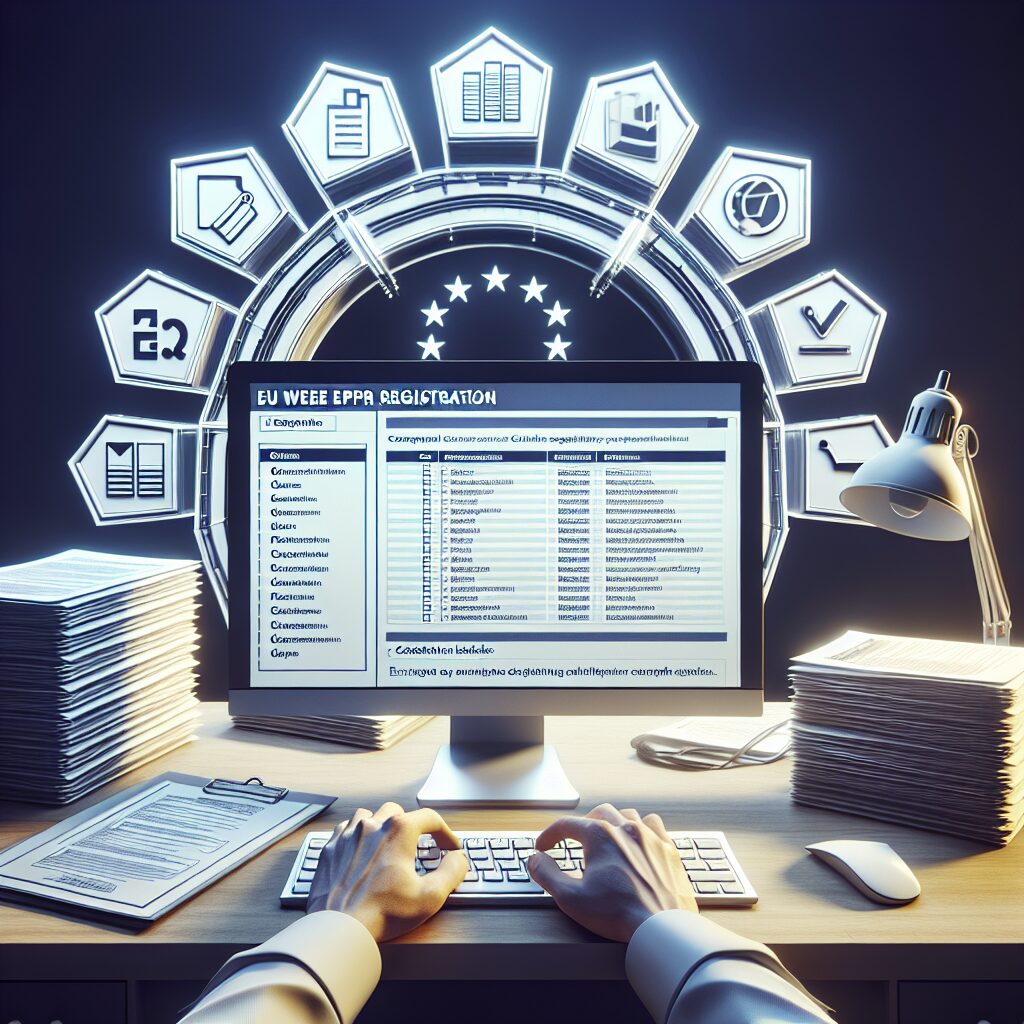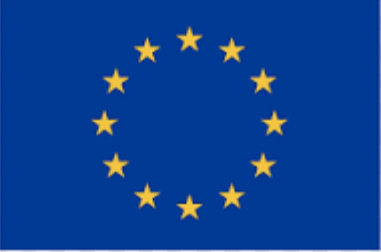About eldris
Epr.eldris.ai leads the EPR sector, in fast, automated, AI Agent EU Complaince. LUCID Packaging, WEEE, and Battery Compliance for Brands, E-Commerce and Service based businesses expanding into the EU.
In This Article
- WEEE and Packaging fall under distinct EPR regimes; both may apply.
- Each EU member state mandates separate registration procedures.
- Non-compliance risks include fines, listing blocks, and reputation damage.
- Amazon and others now enforce proof of EPR registration.
- Use agents or compliance platforms for multi-country management.
- Early compliance supports expansion and brand credibility in the EU.
Understanding Extended Producer Responsibility (EPR)
The Role of EPR in EU Sustainability Goals
Extended Producer Responsibility (EPR) is a central concept in the European Union’s drive toward a circular economy. Under this model, manufacturers, importers, and distributors are held financially and logistically responsible for the environmental impact of their products throughout their entire lifecycle. This includes product design, usage, recycling, and ultimate disposal.
EPR serves dual objectives: reducing waste and incentivising sustainable manufacturing. By mandating responsibility from the production stage to end-of-life management, EPR pushes brands to innovate toward more recyclable packaging and longer-lasting electronics. Regulatory obligations currently exist across multiple waste streams – notably packaging, batteries, and Waste Electrical and Electronic Equipment (WEEE).
With the European Green Deal accelerating climate-focused legislation, WEEE registration EU compliance has shifted from optional to mandatory for nearly all cross-border sellers. The EU considers WEEE, comprising discarded electrical and electronic devices, one of the fastest-growing waste categories. Aligning with EPR ensures that producers participate in long-term sustainability targets, such as net-zero emissions and zero landfill dependency by 2050.
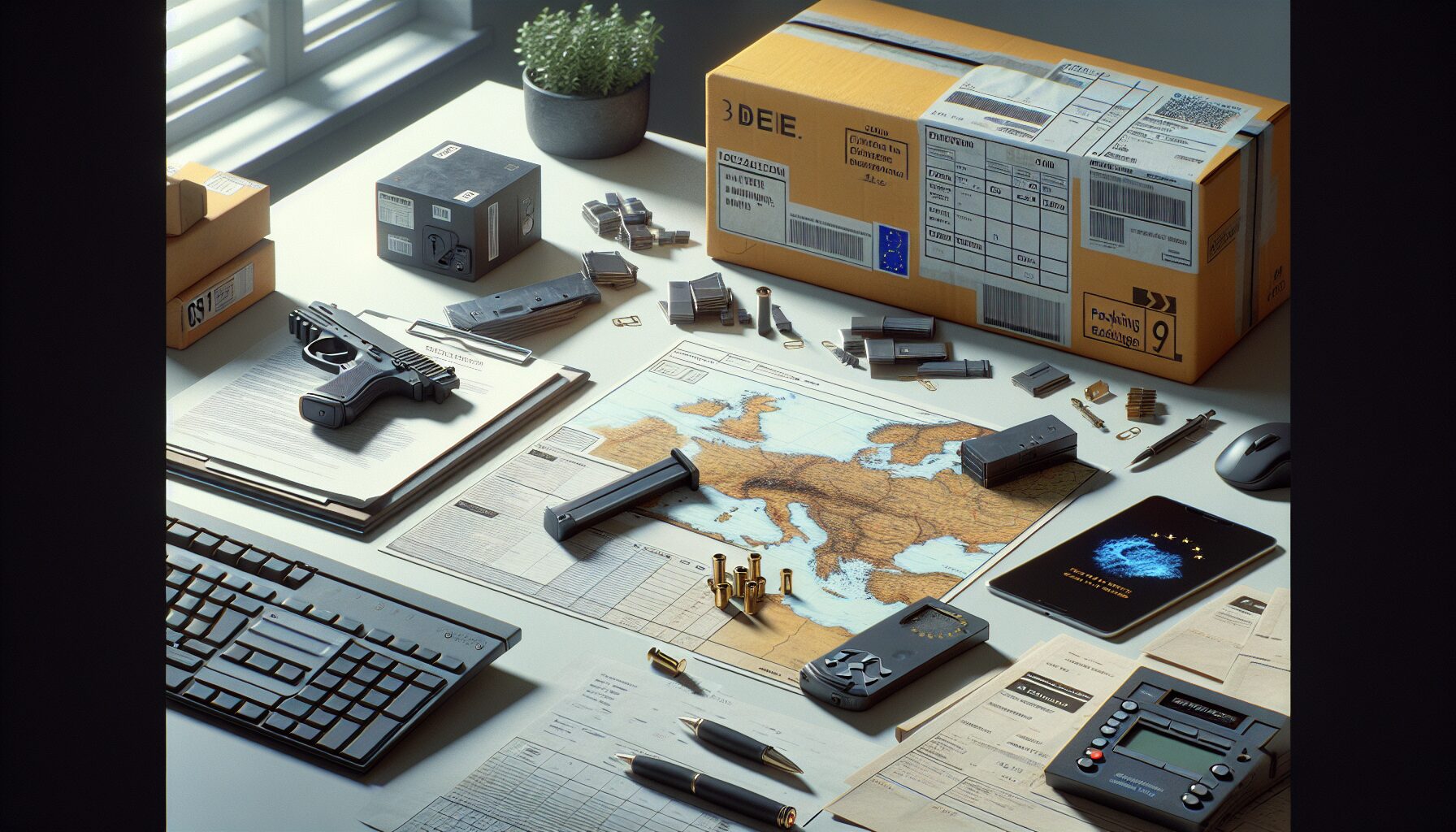
Key Differences: WEEE vs Packaging EPR
What Each Scheme Covers
The fundamental difference between WEEE and Packaging EPR lies in what each scheme targets. WEEE registration EU specifically covers electrical and electronic equipment (EEE), such as laptops, mobile phones, household appliances, and LED lighting. Manufacturers and retailers of these products have to register within each EU member state where they are selling and ensure proper return, collection, and recycling mechanisms are in place.
Packaging EPR, by contrast, deals exclusively with the materials used to package goods – from cardboard boxes and paper inserts to plastic wrapping and foam fillers. Under packaging directives, producers must contribute to national waste collection schemes based on the volume and type of packaging materials they generate when fulfilling customer orders.
Here’s a crucial insight: If a seller is dispatching electronic goods to France, Germany, or other EU nations, they may be subject to both WEEE and packaging compliance simultaneously. Each carries its own producer identification number, reporting requirements, and financial obligations.
Non-compliance with WEEE or packaging EPR obligations can lead to blocked listings, delisting of products, and heavy financial penalties – especially on marketplaces like Amazon and eBay.
Who Needs to Register?
Sellers, Brands, and Fulfilment Considerations
Many businesses mistakenly assume that EPR regimes don’t apply to them – especially if they operate from outside the EU. However, WEEE registration EU directives are clear: any party introducing regulated products into an EU member state’s market is a ‘producer’ in the eyes of the law, regardless of nationality or company location.
This means that UK-based Amazon sellers, US dropshippers, and Chinese electronics exporters all fall under EPR mandates. Online marketplace activity and fulfilment service relationships also influence responsibility. For example, under the German ElektroG law, retailers using Fulfilment by Amazon (FBA) are still deemed responsible for proper registration and number declaration. Fulfilment centres that store and ship products cannot assume this legal role on your behalf.
In some countries, indirect representation is required. This means a non-EU company cannot register on its own but must appoint a local authorised representative. The appointed agent handles local reporting, documentation management, and audit response – forming the official face of compliance in that country.
Registration Step-by-Step: Country by Country
How EPR Varies Between EU States
The process of WEEE registration EU-wide isn’t harmonised, creating complexity for cross-border sellers. Each member state administers EPR schemes via its own compliance bodies and regulatory portals. While the directives are aligned under EU law, national implementation can vary significantly in terms of scope, fees, and enforcement.
Germany: One of the strictest jurisdictions. Producers must register each product brand under the Stiftung EAR registry before any sales commence. Penalties for non-compliance include fines of up to €100,000 and forced product bans.
France: France operates through approved Producer Responsibility Organisations (PROs). Producers can register via organisations like Ecologic and are required to submit annual reports on sales volume, weight categories, and return rates.
Italy: Italy mandates separate schemes for packaging and electronic products. Registration is done through national consortia like Remedia or Ecolight. Local representation may be compulsory depending on the business entity’s origin.
Spain: Spain’s registration is relatively centralised but still requires dual obligations for packaging and electronics. A producer registration code (NIMA) is issued post-registration—essential for customs clearance and local sales.
It is highly advisable to work with local experts or agents who can navigate paperwork, translations, and local authority communication on your behalf.
Marketplace Compliance: Amazon & More
Seller Requirements & Proof of Registration
In recent years, major marketplaces like Amazon, eBay, and Otto have stepped up their enforcement of EPR laws. Amazon now requires sellers trading in EPR-regulated product categories to provide valid WEEE registration EU proof before listing items or fulfilling orders.
This includes:
- A valid Producer Registration Number (PRN) issued by national authorities.
- Email confirmation from designated compliance schemes (e.g. ERP, Ecologic).
- Evidence of paid fees and accurate brand registration.
Failure to supply these promptly may result in suspended listings under Amazon’s extended responsibility governance rules. This is particularly impactful to sellers participating in European marketplaces, such as Amazon.de or Amazon.fr. Note that fulfilment programs like FBA or SFP do not indemnify sellers – responsibility still falls on the product originator.
Checklist: Preparing for 2024 EPR Compliance
Documents, Reports, and Obligations
To ensure you are adequately prepared for 2024 WEEE registration EU requirements, use this strategic checklist:
- Confirm your producer status per EU member state laws.
- Identify all applicable EPR waste streams (WEEE, packaging, batteries).
- Register or appoint a representative for each national registry.
- Submit brand/product details and obtain Producer Responsibility Numbers.
- Join recognised compliance schemes (e.g. Ecologic, Interseroh, Recupel).
- Set up internal tracking for sales volume and materials used.
- Prepare and file annual reports as required, often in local languages.
- Keep proof of compliance ready for audits and marketplace uploads.
This preparation not only ensures compliance but also gives you a competitive advantage in rapidly exploring new markets.
Frequently Asked Questions
Top Concerns from Online Sellers
1. Do I need to register separately for each EU country?
Yes, unfortunately. WEEE registration EU laws are nationalised. There is no “one-stop” EU portal, so separate registration is necessary for each jurisdiction you sell to.
2. As an Amazon seller based in the UK, do I need a German representative?
Yes, Germany and several other member states require non-EU sellers to appoint a local agent or representative to handle WEEE and packaging obligations.
3. Can I sell on European marketplaces without EPR registration?
Not anymore. Major platforms like Amazon now cross-check EPR credentials against sales accounts. Non-compliant listings risk immediate suspension.
4. Is there software to help manage reporting?
Yes. Learn more about EU Extended Producer Responsibility (EPR) offers an integrated dashboard that streamlines multi-country EPR registration and reporting requirements.
Using an EPR Compliance Service
Benefits of Centralised Agent Tools
Given the administrative burden of multi-country compliance, an EPR compliance service can radically simplify your operations. These services typically centralise:
- Registration submission and legal representation in necessary countries
- Brand tracking and classification, avoiding duplicate filings
- Reminder systems for quarterly or annual reporting
- Real-time compliance flagging and notification of legislative changes
Some providers, such as Latest EPR regulations for WEEE and packaging, also offer a digital repository for all registration documents, fee receipts, and correspondence logs. This makes responding to audits or questions from marketplaces more straightforward. Partnering with a trusted agent can also help you prevent errors that might result in de-listing or sanctions.
The Cost of Non-Compliance
Penalties, Limits, and Product Delisting
Non-compliance with WEEE registration EU requirements may lead to grave consequences that extend beyond financial penalties. Authorities in several EU nations have enforced:
- Fines ranging from €5,000 to €100,000 per instance of unregistered sales
- Suspension of product listings from online marketplaces
- Backdated registration obligations, including unpaid fees and interest
- Destruction of non-compliant inventory held at fulfilment centres
The risk exposure also includes reputational damage with regulators and loss of merchant privileges. Whether you are a small-scale Amazon trader or a global brand, prevention is indisputably better – and cheaper – than retroactive enforcement.
Why EPR Matters in Your Expansion Plan
Cross-Border Selling Strategy
For companies eyeing expansion into the European market, WEEE registration EU is not just a box-checking exercise – it’s a gateway requirement. A clear compliance trail increases your trust index with marketplaces, customs, and even consumers. Prospective B2B partners often mandate compliance documentation in procurement pipelines.
More so, EU Green Deal alignment can become a strong marketing differentiator. Demonstrating EPR compliance allows brands to communicate sustainability commitments transparently. Including EPR readiness in your international go-to-market plan ensures uninterrupted scaling, competitive positioning, and reduced time-to-market.
Of note, the EU is now exploring plans to harmonise EPR reporting formats. In the meantime, sellers should rely on robust planning and expert partners. Learn how Read a related article can accelerate your entry into compliant EU markets.
Conclusion: Staying Ahead with EPR in 2024
WEEE registration EU is more than an environmental regulation – it’s a vital code of access for selling electronics and packaged goods within the European marketplace. As legislation tightens in 2024, the proactive seller will prioritise multi-jurisdiction compliance to ensure seamless operations.
By understanding the layers between packaging and WEEE obligations, collaborating with the right agents, and documenting robust processes, brands can convert regulatory burden into strategic advantage. Invest in your EPR strategy now to future-proof your EU market share.
Great guide on weee-vs-packaging-epr-eu-seller-registration-interactive – Community Feedback
Do online sellers need to register for both WEEE and packaging EPR in the EU?
If you sell electrical or electronic goods, you must register for WEEE EPR. If you ship products in packaging, you likely need to register for Packaging EPR. Many sellers must register under both schemes in each country they sell to.
Are WEEE and Packaging EPR registrations required in every EU country?
Yes, EPR obligations are enforced country by country across the EU. You need to register for WEEE and/or Packaging EPR, and obtain registration numbers for every individual country where your products are sold and shipped.
What is the difference between WEEE and Packaging EPR for online sellers?
WEEE EPR applies to electronic or electrical goods, requiring sellers to manage end-of-life equipment. Packaging EPR covers responsibility for the packaging materials placed on the market. Obligations, registration, and reporting differ by product and country.


